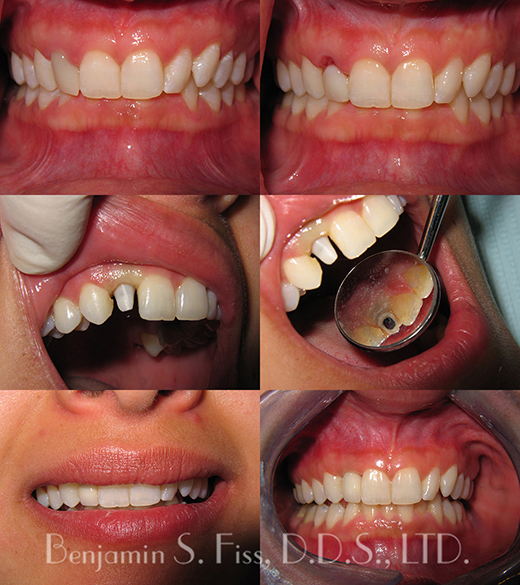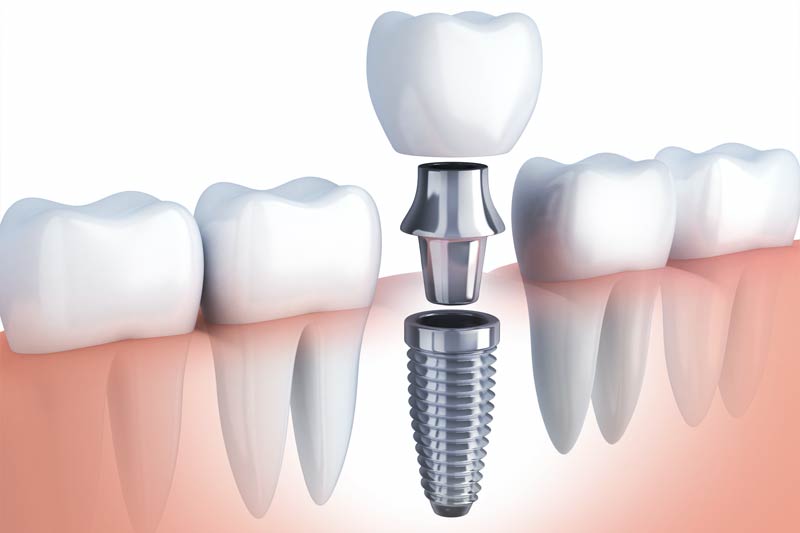Family Dental Clinic New Albany OH The Advantages, Risks, and Insurance for Dental Implants
Family Dental Clinic New Albany OH The Advantages, Risks, and Insurance for Dental Implants
Blog Article
Dental Clinic Condit OH Dental Implant Procedures
The dental implants procedure is a complete process designed to switch missing teeth with artificial roots. This methodology is widely look at this site regarded for its hop over to these guys efficacy and durability. Understanding the step-by-step method may help prospective sufferers reference know what to anticipate and prepare adequately.
Initial session marks the start of the dental implants journey. During this part, the dentist evaluates the oral cavity, critiques the patient’s medical historical past, and discusses the objectives of therapy - Dentist Office Galena OH. This interaction creates a roadmap for the entire procedure, ensuring that specific wants are catered to accordingly
After the session, diagnostic imaging comes into play. X-rays or 3D scans of the jawbone help the dental team assess bone density and determine one of the best positioning for the implants. This knowledge is essential for growing a tailor-made remedy plan. Appropriate imaging ensures that patients stay knowledgeable about their distinctive state of affairs.
Dental Center Alexandria OH Affordable Dental Implants: Finding the Best Value
Once planning is complete, the surgical phase begins. Local anesthesia is run to minimize discomfort in the course of the procedure. The dentist then creates a small incision in the gum where the implant will be positioned. This meticulous course of requires precision to keep away from damaging surrounding tissues.
Next, the dental implant, typically made from titanium, is inserted into the jawbone. Dental Center Condit OH. This implant serves as the artificial root for the future crown. After placement, the gums are sutured closed, allowing the implant to integrate with the bone via a process called osseointegration. This healing interval usually lasts several months, because the bone grows around the implant
Follow-up appointments are essential through the therapeutic section. The dentist closely monitors the world to make sure proper therapeutic and integration. X-rays can also be taken to visualize the progress of the implant within the jawbone. These check-ups provide reassurance and allow for addressing any problems early on.
Once osseointegration is successful, the next step involves inserting an abutment. This small connector sits on prime of the implant and serves as a foundation for the crown. The dentist opens the gum to connect the abutment, which briefly extends above the gum line. This phase generally requires additional therapeutic as well.
Dental Clinic Columbus OH Permanent Dental Implants
Impressions of the teeth are then taken to create a custom crown. This crown is designed to look and function like a natural tooth. The dental lab makes use of these impressions to craft a crown that seamlessly integrates with the patient’s present dentition. The customized approach ensures not simply aesthetics but in addition functionality.
Once the crown is ready, the patient returns to the dentist’s office for last placement. The crown is fastidiously bonded onto the abutment, securing it in place. This moment signifies the fruits of the dental implants procedure, reworking the look and functionality of the patient’s mouth significantly.
Smile Care Granville OH Single-Tooth Implants: Everything You Need to Know
Post-procedure care is crucial. The dentist offers specific instructions, including dietary recommendations and oral hygiene practices. Regular check-ups are needed to monitor the crown and overall dental health. Adhering to guidance promotes longevity for each the implants and the encircling teeth.
Sometimes, potential issues can come up in the course of the healing and integration phases. Patients could experience discomfort or swelling, which is often normal. If persistent pain or uncommon signs develop, reaching out to the dental skilled is significant for addressing any concerns immediately.
The benefits of dental implants extend far beyond aesthetics. They restore the function of the mouth, making chewing and speaking more comfortable. Unlike conventional dentures, which can slip or require adhesive, implants provide a extra stable resolution.
Smile Care Johnstown OH Step-by-Step Guide to Dental Implant Procedures
Long-term success hinges on correct care. Engaging in routine dental hygiene practices, together with brushing and flossing, ensures the health of both the implants and natural teeth. Regular dental visits enable the dentist to assess the overall condition of the mouth.
In abstract, the dental implants process is a multi-faceted approach to restoring missing teeth. Each step, from preliminary session by way of to postoperative care, is essential for achieving optimum outcomes. With a concentrate on personalized therapy plans and attentive follow-up, patients can sit up for improved oral health and renewed confidence.
Understanding each stage equips people with knowledge, serving to them navigate the process smoothly. The advancements in dental expertise proceed to enhance the success and luxury associated with implants. This transformative journey is not only about replacing teeth but also about enhancing quality of life.
Dentist Alexandria OH The Benefits of Dental Implants: Why Choose Them?
Continued education concerning the process and maintenance reinforces the worth of dental implants, making them a preferred choice for lots of. As extra people search solutions for tooth loss, the significance of knowledgeable decision-making becomes ever clearer.
Successful outcomes and joyful smiles are the final word testament to the efficacy of the dental implants procedure. Engaging in open dialogue with dental professionals results in informed choices and successful patient experiences in dental care.
- Initial session involves a complete dental examination, together with X-rays, to evaluate bone density and determine the feasibility of implants.
- A personalized remedy plan is developed, outlining the procedure, recovery time, and prices concerned.
- Prior to the surgery, sufferers may undergo extractions or bone grafting if needed to ensure a secure foundation for the implants.
- Anesthesia choices are discussed, and the surgery is typically performed under local anesthesia or sedation to make sure consolation.
- The dentist places the titanium implant into the jawbone via a small incision in the gum, permitting for integration with the bone over time.
- A healing period of several months follows, permitting the implant to fuse with the jawbone in a course of called osseointegration.
- The next step includes the placement of an abutment, which serves as a connector between the implant and the prosthetic tooth.
- After an extra therapeutic period for the gums to recover, the ultimate prosthetic crown is custom-made and securely connected to the abutment.
- Post-procedure care and common check-ups are essential for monitoring the implant’s health and ensuring long-term success.
- Ongoing oral hygiene practices, including brushing, flossing, and professional cleanings, are important to keep up both the implant and overall dental health.undefinedWhat is the first step within the dental implants procedure?

The first step sometimes entails an intensive dental examination, together with X-rays and 3D imaging, to assess the bone structure and decide if dental implants are an appropriate possibility for the patient.
Dentist Office Galena OH Are Dental Implants Permanent? What You Should Know
How long does the dental implant process take? - Pediatric Dentist Columbus OH
The dental implant process can take a quantity of months, because it usually requires multiple appointments. This consists of the preliminary session, the implant placement surgery, and the healing interval earlier than inserting the crown.
Premier Dental Granville OH Dental Implant Procedure: What You Need to Know Before Surgery
Is the dental implant surgery painful?

Local anesthesia is administered during the process to minimize discomfort. Most sufferers report feeling minimal pain after the anesthesia wears off, and any discomfort can usually be managed with over-the-counter pain aid.
What is the recovery time after the dental implant surgery?
Recovery time varies depending on the individual and the complexity of the process. Generally, preliminary healing takes about 1 to 2 weeks, while the complete integration of the implant into the bone can take several months.
Dental Care Granville OH Dental Implant Surgery: Procedure, Recovery, and What to Expect
How do I care for dental implants after the procedure?
Caring for dental implants involves sustaining glorious oral hygiene practices much like caring for natural teeth. Regular brushing, flossing, and dental check-ups are essential to make sure the longevity of the implants.
Pediatric Dentist Hartford OH Affordable Dental Implants: Finding the Best Value
Are dental implants lined by insurance?
Insurance coverage for dental implants is decided by the individual policy. Many plans might cover a portion of the procedure, but it’s advisable to contact the insurance provider directly to know the particular coverage particulars.
Dental Care Associate Alexandria OH Full Mouth Dental Implants: A Comprehensive Solution

What supplies are dental implants made from?
Dental implants are sometimes created from biocompatible materials like titanium, which integrates well with bone. Some advanced choices embrace zirconia implants, known for their aesthetic appeal and reduced metallic visibility.
Orthodontics Galena OH The Advantages, Risks, and Insurance for Dental Implants
Can anyone get dental implants?
While many people are candidates for dental implants, those with underlying health points, inadequate bone density, or lively periodontal disease may need to address these points before continuing with the procedure.

How long do dental implants last?
Family Dental Clinic Sunbury OH Frequently Asked Questions About Dental Implants
With proper care and maintenance, dental implants can last a lifetime. However, the lifespan of the crown positioned on the implant might differ and usually needs replacement every 10 to fifteen years.
Report this page